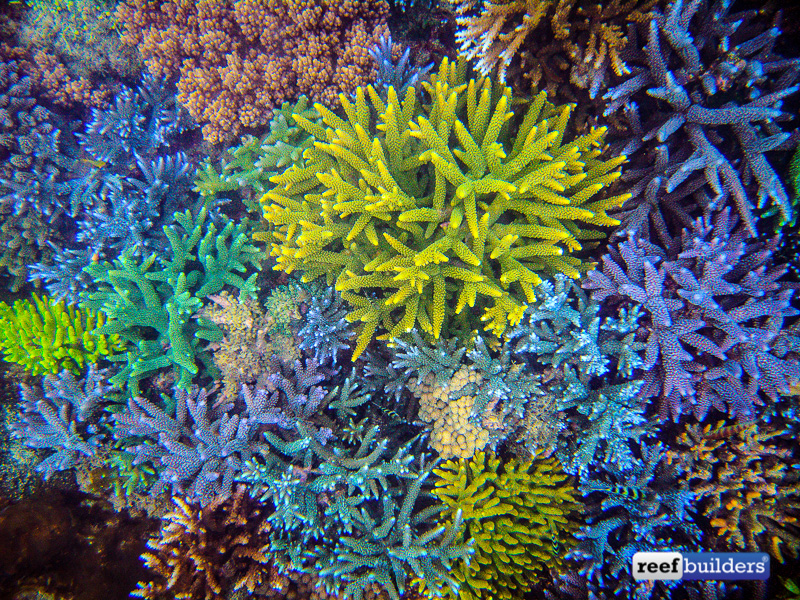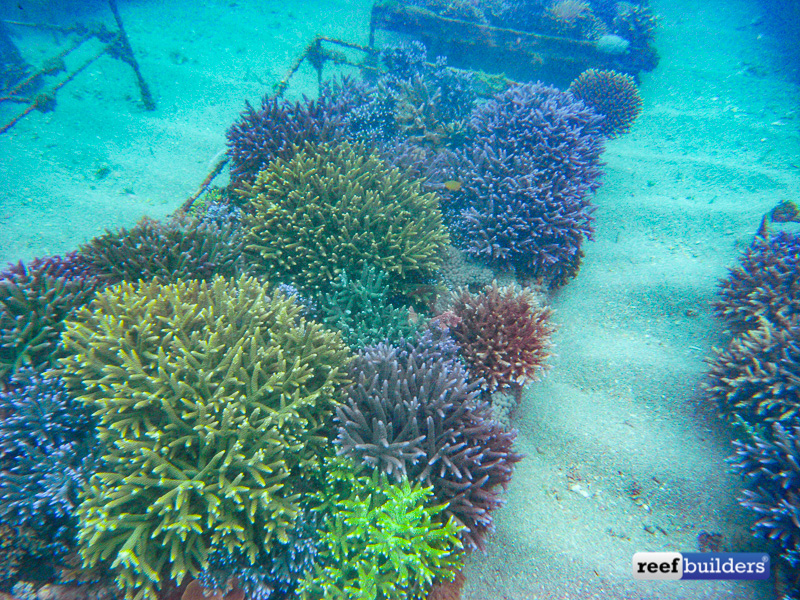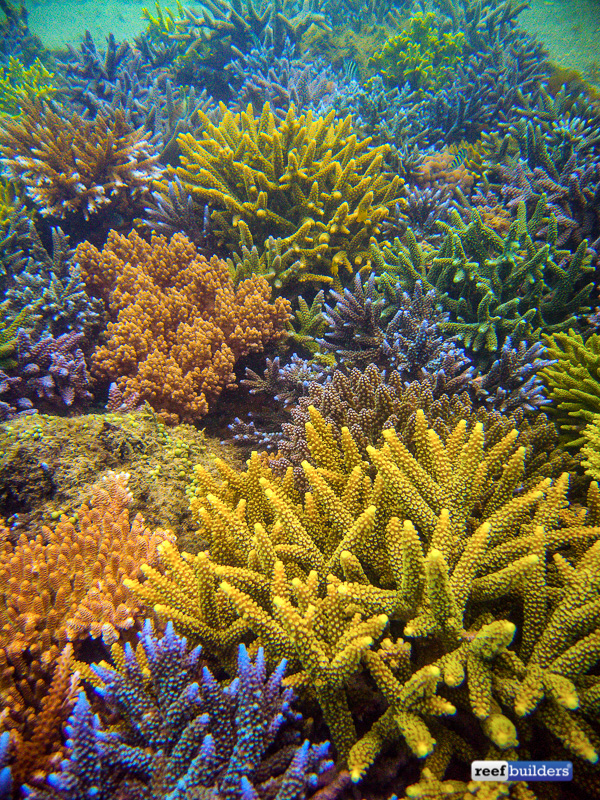

When Coral Farms Become Coral Reefs

You would be forgiven for thinking the image above is a picture of a perfect coral reef but it is in fact a crop of coral planted there by a coral farmer. And when I say a ‘Coral Farmer’ I’m not talking about a guy at home with a couple tanks in his basement but a bonafide cultivator of live coral who plants corals and plots of ocean farmland.

As aquarists we tend to really only care about the corals harvested from these ocean farms and sold for aquariums at manageable sizes. But what you might not know is that when these hand placed corals are really successful, they turn into the most colorful and diverse patches of coral reef to rival even natural assemblages.

It’s only when we zoom out of the picture that we can barely make out some remnants of what these corals are growing on, steel racks and tables to elevate the corals off the bottom. But on a long enough timeline, when the coral farming site is truly successful and the corals grow at natural speeds, it’s quite easy for the corals to completely overgrow their supports.
When these corals grow faster than they can be harvested something magical happens, and the coral tables actually becoming small man made coral reefs. As far as the local reef life is concerned, this is a real coral reef with large mature coral colonies that spawn with the seasons, butterflyfish that feed on them, and lots of fish and invertebrates that live in and around the structures.

For a time these plots of coral farmland do change role from producing small coral colonies, to becoming broodstock for future generations of coral plugs. But if conditions are right, eventually the weight of the live growing coral and the corroding steel will cause the entire table to collapse.
In some cases the live coral will continue to thrive, grow and even reproduce. Other times the sandy bottom will reclaim the coral and turn the live coral back into rubble, Either outcome is very natural for both natural coral reefs and successful coral farming tables alike.

Whatever the outcome, the successful coral farmer is one who becomes in tune with the natural processes of the reef, producing corals both for the natural environment, and helping to share the beauty of this incredible environment with people and aquariums all around the world.
Big thanks to Vincent Chalias & Bali Aquarium for sharing these lush images of what real, thriving coral farming tables look like.




















































